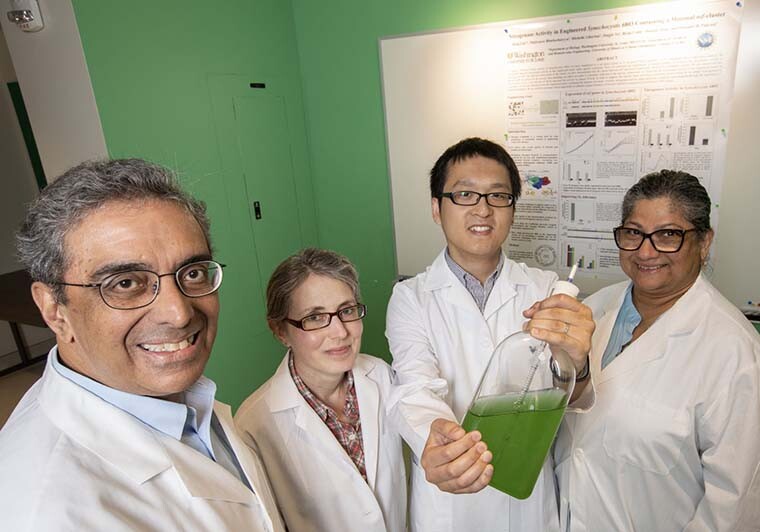Nitrogen is a vital nutrient for plants, and although there's plenty of it drifting around in the air, they can only pull it out of the ground – hence the need for artificial fertilizer. But now, researchers at Washington University in St Louis have engineered bacteria that can efficiently suck nitrogen out of the air, and the long-term goal is to develop crops that can do the same.
About 78 percent of the Earth's atmosphere is made up of nitrogen, but the legume family is among the very few plants that are able to tap into that rich resource (known as nitrogen fixing). The vast majority rely on absorbing the nutrient through their roots, but soil can often be lacking, requiring fertilizer to be spread onto crops.
Developing plants that can essentially "fertilize" themselves through the air could be a huge boon to agriculture and the environment. In a recent study, researchers engineered soybean plants to have more nitrogen-carrying proteins, which kicked the plants into overdrive. Another technique, infusing seeds with nitrogen-fixing bacteria, could be applied to almost any plant.
Similar bacteria were the focus for the new study. The WUSTL researchers set out to isolate the nitrogen-fixing genes in cyanobacteria. In particular, they focused on a species known as Cyanothece, which uses a circadian rhythm to photosynthesize during the day and fix nitrogen at night.

The team determined which genes were responsible for this biological clock, and spliced them into another cyanobacteria species, Synechocystis, to see if it could pick up the nitrogen-fixing ability. And sure enough, it did.
After the removal of oxygen, which is produced through photosynthesis and interferes with the nitrogen fixation, and the addition of 35 new genes, Synechocystis was able to fix nitrogen at a rate of about two percent that of Cyanothece. Not great, but it's a start. But the bugs upped their game when the team removed some of the added genes: with only 24 Cyanothece genes, Synechocystis' nitrogen fixing increased to over 30 percent of Cyanothece's rate.
"This means that the engineering plan is feasible," says Himadri Pakrasi, lead researcher on the study. "I must say, this achievement was beyond my expectation."
The research is a step towards the team's ultimate goal of finding a way to genetically engineer plants that are able to fix nitrogen. Doing so could increase the yield of crops and reduce the need for fertilizer, which can be environmentally costly to produce and hazardous once it leaches into natural waterways.
The research was published in the journal mBio.





